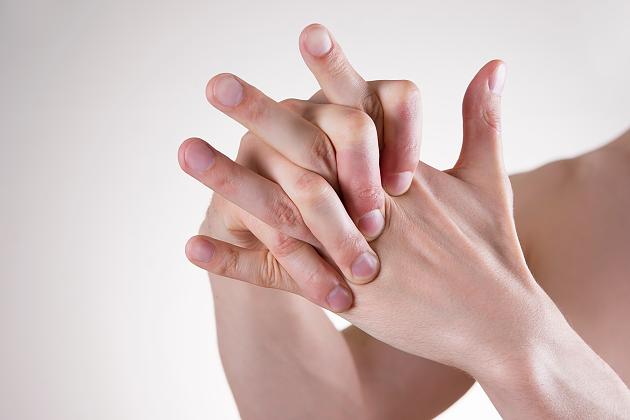The hunger for meat in Germany is great. Every inhabitant eats around 60 kilograms per year. Around 750 million animals are therefore slaughtered every year. Meat consumption has been falling for years, but only in the single-digit range. However, statistically speaking, every citizen still consumes around 1,100 animals in his life, including mainly chickens, but also just under 50 pigs and four cattle, as the BUND’s last meat atlas in 2018 calculated.
Meat causes a lot of CO 2 , but provides the best protein
Meat is thus undoubtedly one of the staple foods. However, it is left out of the picture that meat consumption is devastating for the climate balance: Through animal production, a meat eater pollutes the atmosphere with a good 1,800 kilograms of CO 2 per year and thus heats the climate catastrophe, vegetarians only make up about half of this.
Aside from that: nutritionally, meat offers a lot of positives. “Meat is definitely a high-quality food because it provides us with protein in particularly good bioavailability,” says Antje Gahl, press spokeswoman for the German Nutrition Society ( DGE ).
Animal protein, i.e. from meat and dairy products, can be used so well by our body because the composition of the amino acids is very similar to that of human protein. Animal protein usually contains all of the essential amino acids that we need in sufficient quantities, while plant-based foods often do not have the full spectrum of these amino acids. The body can therefore produce protein particularly quickly and appropriately from animal protein – for the muscles, for example.
In addition, meat is also characterized by other valuable ingredients:
-
readily available iron,
-
Selenium and
-
zinc
– all minerals and trace elements that are indispensable for blood formation, immune system, cell health, fertility and much more. Another unique feature is the high proportion of B vitamins, including vitamin B12 , which is only found in sufficient quantities in animal foods such as meat, eggs, milk and dairy products.
Preserving nutrients through proper cooking
To ensure that these nutrients are preserved as well as possible during preparation, the expert recommends steaming and slow frying, preferably with little fat. Some B vitamins are sensitive to heat, such as vitamins B1, B2 and B6 – vitamin B12 a little less.
The way in which meat and meat products are prepared determines how many vitamins are destroyed and how undesirable pollutants are formed. Therefore, everyone should consciously pay attention to high temperatures such as when grilling or the duration of heating. The longer and hotter it is cooked, the more pollutants are created or parts of the valuable B vitamins are destroyed.
Nevertheless, barbecuing is particularly popular . An important tip from the expert for grilling: “Dab the marinade before you put the meat on the grill.” Otherwise it will drip into the embers, burn and, among other things, produce polycyclic aromatic hydrocarbons. PAHs are strongly suspected of increasing the risk of cancer.
Meat is healthy when prepared correctly. But is it also an indispensable food? “No”, says the qualified ecotrophologist. Apart from vitamin B12, which is also contained in milk and dairy products, each of these nutrients can be obtained from plant-based foods – even if not in the ideal composition and high quality that is given with meat.
The “dark side” of meat: cholesterol, purine and arachidonic acid
However, meat is also the main source of cholesterol. In high amounts, cholesterol is a risk factor for arteriosclerosis and thus heart attack and stroke. It is not only present in the visible fat in the meat, but also in low-fat pieces. 100 grams of lean meat provide around 50 milligrams of cholesterol per 100 grams. 300 milligrams per day is the maximum limit for the intake of cholesterol per day for healthy people, i.e. without a lipid metabolism disorder.
In addition, meat, especially offal, contains purine, i.e. uric acid, which supports gout. Arachidonic acid plays a role as the third negative, natural ingredient in meat. The body creates inflammatory substances from this fatty acid. Diet suggestions for diseases with an inflammatory character such as rheumatism are therefore always meat-free or strictly reduced in meat.
“The majority of the amount of cholesterol and purine ingested with food actually comes from meat and meat products such as sausage and ham, a particularly large proportion of which have offal,” confirms the scientist. Nevertheless, cholesterol is an indispensable substance in the body because it takes on important tasks in building cells and nerves. “But our body also produces cholesterol itself and is therefore not dependent on the intake with food,” she explains. Anyone who then eats a lot of meat and sausage quickly absorbs high amounts of cholesterol.
Red meat vs. White meat
However, not all meat is created equal . When it comes to health, a distinction is made between red and white meat. Red meat, i.e. beef, pork, lamb, sheep and goat, is considered particularly unhealthy because it is said to favor diseases.
“Anyone who eats a lot of red meat and especially processed red meat has a higher risk of colon cancer, as many studies indicate, according to the current state of knowledge, consumption of white meat (poultry) is not related to cancer,” says the qualified ecotrophologist. Overall, however, the quality, quantity and method of preparation of the meat are decisive in contributing to a healthy diet.
Pork is leaner, chicken is fatter than expected
But the animal from which the meat comes also plays an important role. How about pork, the most popular meat in Germany and the other types of meat consumed in this country?
pig
Depending on the fat content, pork provides between 100 and 250 kilocalories per 100 grams, 70 milligrams of cholesterol. It also has a high content of vitamins B1 and B6.
So pork is surprisingly low in calories, but provides more cholesterol than, for example, beef. “Reach less for high-fat parts,” advises Antje Gahl, “but because of its vitamin B1 and B6, zinc and iron content, pork can make a contribution to a wholesome diet.”
Pork is popular because of its fine taste and can be used in many ways, quickly prepared and is particularly suitable as pan-fried meat (schnitzel) or roast with a crispy rind.
Beef
In terms of calorie content, beef is comparable to pork, depending on the fat, has around 150 to 200 kilocalories per 100 grams and 50 milligrams of cholesterol. It scores with high levels of vitamin B12, zinc and iron.
The strong taste of beef is particularly appreciated by many meat eaters. Because of its long fibers, beef lean meat must be specially prepared; apart from the fillet pieces, it requires a longer cooking time.
poultry
White, tender meat and a nutty taste are the characteristics of chicken, duck, turkey and goose. Because of the layer of fat under the skin, poultry meat provides a relatively large number of calories, around 270 kilocalories per 100 grams. If you choose a skin-free steak, you only get around 160 kilocalories. The fat content is around 25 grams per 100 grams of poultry meat.
In addition, poultry meat is particularly rich in protein, so it provides a lot of energy. Zinc, potassium and B vitamins make poultry meat particularly healthy.
But be careful, the crispy skin of chicken and duck contains lots of purines, so it can increase the risk of gout. This is particularly relevant for those who already have elevated purine levels, warns the expert. However, poultry is safe for healthy people in this context.
But: “Poultry meat contains significantly more cholesterol than is generally assumed, namely around 90 milligrams per 100 grams,” she adds. Chicken may be low in fat, but that doesn’t mean it’s low in cholesterol, as is often assumed.
lamb
The tender, dark meat with its strong taste is not one of the Germans’ favorite varieties. However, it contains many B vitamins as well as iron and has a high proportion of valuable protein. What is surprising, however, is that on average lamb provides more calories than pork, almost 200 kilocalories per 100 grams of fresh meat, as well as 70 milligrams of cholesterol and many saturated (unfavorable) fatty acids.
Particular attention should be paid to the fatty acid composition with many saturated fatty acids in lamb. Like chicken, lamb is not fundamentally unproblematic when it comes to fat – as is often assumed.
Wild
It looks different with game meat. Saddle of venison, venison ragout, roast venison and wild boar are rarely served in Germany, although the meat is actually very low in fat, rich in protein and rich in vitamins B1 and B2, potassium, magnesium, iron, zinc and selenium – and therefore healthy. Depending on the variety, it provides only 100 to 160 kilocalories per 100 grams of fresh produce, with less than ten grams of fat, around 60 milligrams of cholesterol and hardly any purine.
However, game meat should only be enjoyed well cooked because it can contain parasites, as the Federal Institute for Risk Assessment ( BfR ) warns. The radiation exposure of venison can also be high, depending on the region. “In wild boars, values are still occasionally measured today that exceed the limit value for marketing 600 Becquerel per kilogram by more than ten times,” reports the Federal Office for Radiation Protection BfS .
horse
Horse meat is also controversial, although it is very healthy with a high content of minerals, vitamins and protein, but low in fat (around two grams per 100 grams of meat) and low in cholesterol. Here there are more psychological reasons why the meat of the popular sport animals is frowned upon, in contrast to France , where it is coveted as a delicacy.
You can eat that much meat
Meat is therefore quite healthy. “Nobody has to go without meat in principle, because it is a valuable part of our diet,” says the expert. However, it depends on the amount, and the following applies: less is more.
The DGE recommends that people who eat meat do not consume more than 300 to 600 grams of meat and meat products per week. That goes for adults. So it’s practical: eat meatless for a few days, then a meat dish. A portion of meat can weigh 100 to 150 grams, a slice of cold cuts 15 to 25 grams, depending on the type.
“Meat makes perfect sense in a wholesome diet, because it covers the need for many important nutrients with a single food. Even these small amounts are sufficient for this. It is best to choose predominantly plant-based foods and supplement them with animal-based foods, ”emphasizes Antje Gahl.
Of course, that doesn’t mean everyone has to eat meat. Those who prefer a vegetarian diet can supply these nutrients through a targeted selection of different types of vegetables and fruits, whole grain products, legumes, nuts and dairy products.
Organic meat or meat from conventional farming
Meat consumption in moderation is therefore quite healthy. It is not necessary to weigh one type of meat against another. Variety as well as personal preferences, taste and last but not least religion are important, emphasizes the qualified ecotrophologist. For more and more people, the ecological balance of rearing and animal welfare also play a role, keyword antibiotics, but also manure pollution and thus nitrate in the groundwater.
In organic animal husbandry, even fewer antibiotics may be used than in conventional farming, although there has also been a reduction recently. It is different with manure, whether organic or bulk, every animal produces just as much of it.
The best advice: eat less animal foods and more plant-based ones. In this way, fewer resources are used, the environment is less polluted and CO 2 emissions would be significantly reduced. Because meat production in particular produces a lot of the climate gas methane, which is many times more harmful to the climate than CO 2 .
Halve meat consumption
But as mentioned at the beginning: With 60 kilograms of meat consumed per person per year, Germany is far from the moderate recommendations of the DGE, which make up at most half of this amount. Accordingly, healthy meat consumption should hardly exceed around 30 kilograms per year – for the benefit of health, animals and the environment.




